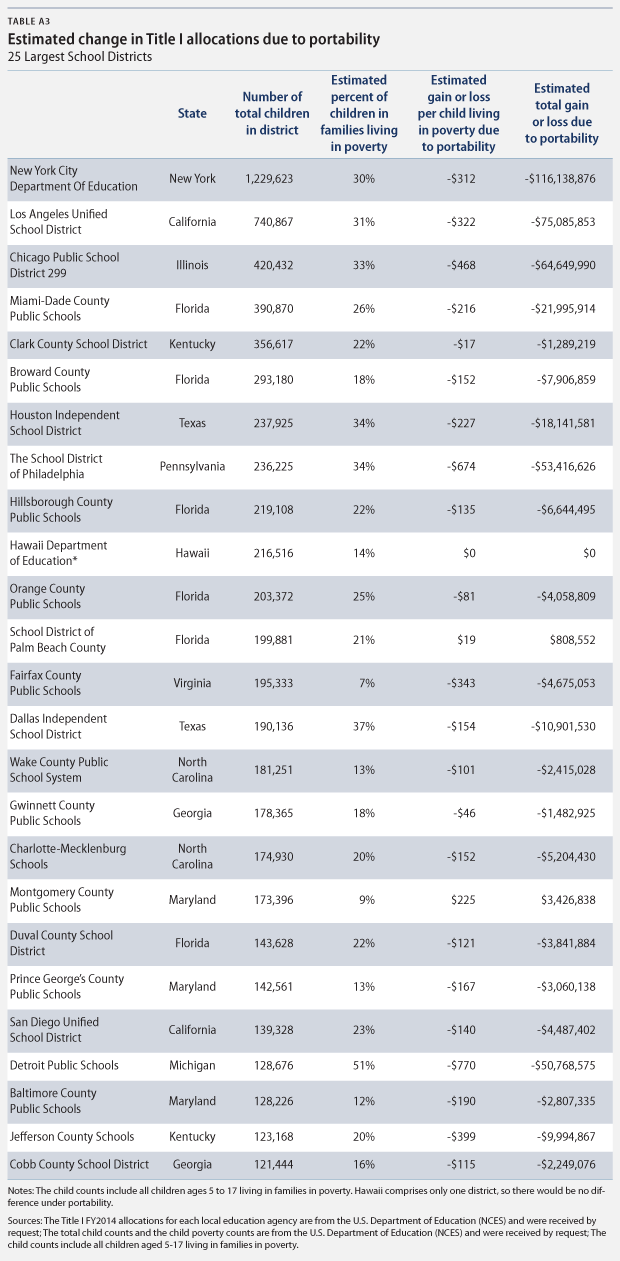Washington, D.C. — A new analysis from the Center for American Progress reveals that a proposal from Senate Health, Education, Labor, and Pensions Committee Chairman Lamar Alexander (R-TN) would drain millions in valuable federal resources from school districts in high poverty areas, including many in urban areas. A provision known as portability, or “money follows the child,” in Alexander’s draft bill to reauthorize the Elementary and Secondary Education Act would change the existing Title I, Part A, funding formula to allow states to distribute to all districts the same amount per student simply based on the total number of children in low-income families. The current formula in ESEA allocates billions of dollars to states per year based on the number and concentration of students living in poverty, thus providing schools with large numbers of economically disadvantaged students with additional financial support.
CAP’s new issue brief uses fiscal year 2014 allocations for school districts to analyze the impact that portability would have had on students last year. CAP’s findings include:
- Portability drives resources away from high-poverty districts and into more affluent ones.
- Nationally, districts with high concentrations of poverty could lose an average of around $85 per student, with some districts at risk to lose hundreds of dollars more per student.
- On average, the most affluent districts could gain more than $290 per student.
“The Elementary and Secondary Education Act was written to ensure that all students, regardless of background, have access to a high-quality education. There’s no question that our country still has work to do to achieve this goal, but the last thing Congress should do is allow states to redirect resources away from our poorest students,” said Max Marchitello, policy analyst at CAP and co-author of the brief. “Unfortunately, Chairman Alexander’s proposal, should it become law, could drain millions of dollars from the schools that need those funds the most, including the schools in the poorest communities in Tennessee.”
“Portability is a losing formula for dozens of urban school districts—and not just in big cities such as New York, Los Angeles, and Chicago,” said Rob Hanna, senior policy analyst at CAP and co-author of the brief. “Schools in high-poverty districts across the country could see resources redirected to affluent districts with students that are already well off.”
The chart below shows the potential impact of portability on 25 of the nation’s largest, most populous school districts:

Analyses for all 50 states plus the District of Columbia on the potential impact of portability on funding for schools are included in CAP’s new brief. Click here to read “Robin Hood in Reverse: How ESEA Title I, Part A, ‘Portability’ Takes from the Poor and Gives to the Rest.” Click here to view CAP’s recent work on ESEA reauthorization.
For more information or to speak to an expert, contact Allison Preiss at [email protected] or 202.478.6331.
###